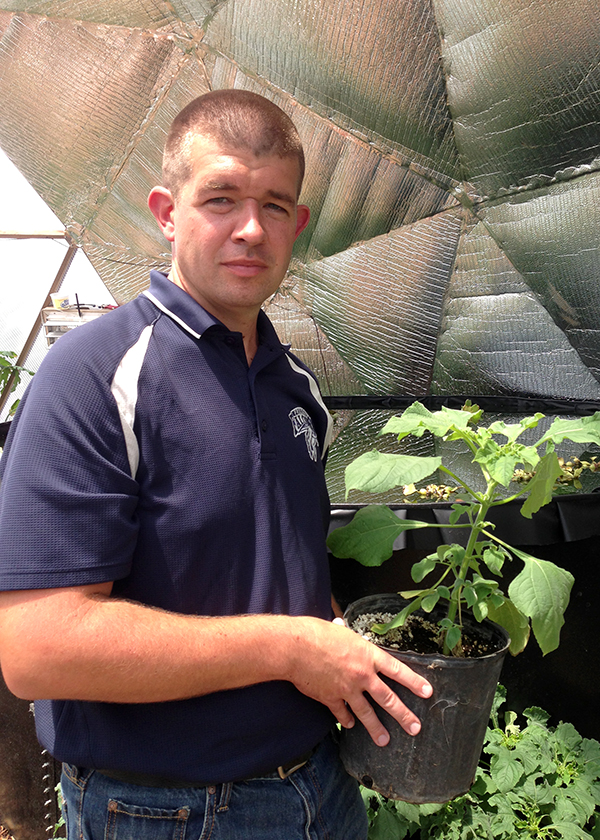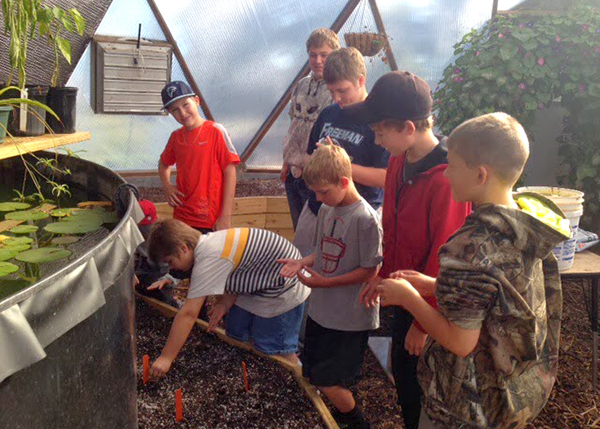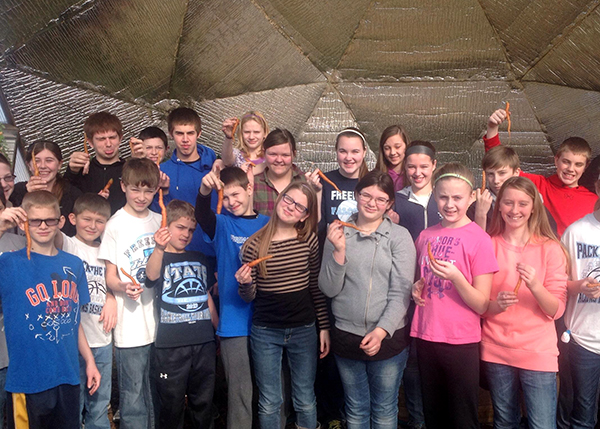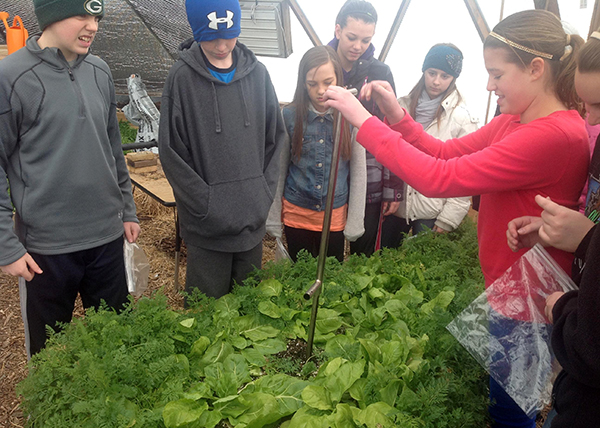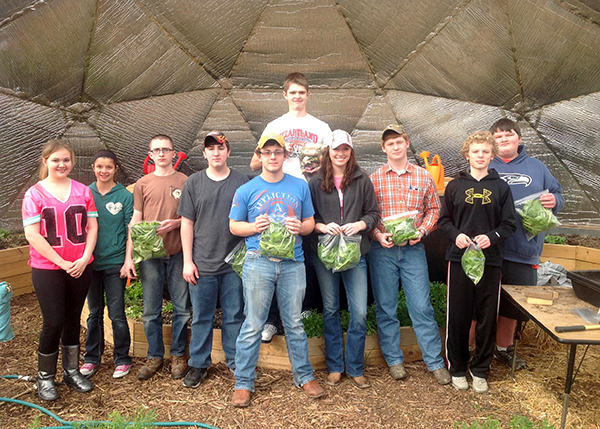Mr. Jensen, agriculture teacher in Nebraska, has always spent a lot of time outside. From landscaping with his wife to activities like hiking and camping, he knows the value of getting some fresh air. Now, with the creation of a growing dome, his students are able to connect with nature while at school! The garden is almost a year old and has already had two successful seasons of growing vegetables. Below, Mr. Jensen shares the challenges and opportunities of creating a school garden.
Name: Tony Jensen
School: Freeman Public School
County, State: Gage County, Nebraska
Grade, Class: 7-12th Grade Agriculture
Tell us about your background with soil science, nutrients, and gardening.
I have always enjoyed being outdoors doing activities like fishing, hiking, and camping. My wife has a horticulture background so our family spends a lot of time in the garden and working on landscaping around our home and community.
Why did you decide to start a school garden?
We constructed a growing dome greenhouse in May 2013 and are using the raised beds inside the growing dome to grow vegetables year-round. We then donate our harvests to local food banks and pantries to provide for our neighbors in need.
To me, there are many teachable moments that come from this facility. We can teach about crop production, soil science, renewable energy, healthy eating, food safety, and service to others through hands-on activities.
What were the first steps in making the growing dome a reality?
We researched a feasible option for a greenhouse structure that would meet the needs of our school, we set goals for our project, and then began raising funds for the structure.
What did you grow and how did you choose that plant?
The first year, we decided to experiment with a variety of different vegetables to learn how the plants would grow within the microclimate of the growing dome. In the summer, we grew tomatoes, peppers, beets, cucumbers, zucchini, and squash. In the fall and winter seasons, we grew carrots, swiss chard, lettuce, radishes, and turnips.
How did you expand the learning opportunities in and outside of the garden?
We were able to involve the 5th grade science classes in the planting, maintenance, and harvesting activities of the dome. Also, the 5th grade class got to do some soil testing with our 7th grade agriculture class inbetween seasons. Depending on what needs to be done, we involve all of the agriculture education classes in the dome at some point throughout the year.
What was your experience working with other teachers, students, and parents?
My experience working with other teachers, students, and parents have been very positive. Teachers like to expose their students to educational opportunities that are different than the regular classroom routine, and community members have helped out from time to time from supplying materials for the dome or volunteering during construction and summer maintenance. I constantly get asked how things are progressing in the dome and what we are growing in the facility, so there is a definite interest in the growing dome from community members.
How did you introduce the topic of soil health and nutrients to your students?
We talk about these subjects in our Plant Science class and with the use of the growing dome, we have an opportunity to apply these principles in a hands-on environment.
What were the biggest difficulties with your school garden?
The biggest challenge was adjusting to gardening in the dome as opposed to what we are used to-gardening outside. Knowing when to plant, when to water, and how to manage the dome at different points after the dome was set up was a new experience that we learned a lot from. It will be much different now that we are almost a year into the process and know what to expect at different points of the year.
How did you see the students change as they spent time in the garden? How did this influence you?
I think some of their eyes were opened to the opportunities that they had to grow their own food. Some were impressed with the flavor present in home-grown vegetables. Others were amazed how easy it was to get started gardening. It seemed like the more time students spent in the dome, the more they wanted to go out there, so we have begun taking some classes out there to have a different classroom environment.
What would you advise to anyone hoping to start a garden or become involved with a garden at their local school?
Take your time and develop a plan for what you want to accomplish in your garden. Once the plan is developed, do not feel like you have to do everything the first year. Find partners to help the project succeed, build support, and sell the positive aspects of gardening to get people excited.
If you had one, what would your gardening motto be?
“To plant a garden is to believe in tomorrow.” – Audrey Hepburn





